|
Opinions Overtourism or undermanagement and underinvestment? 06 MARCH 2018 9:18 AM Overtourism reactions pose a threat to the development of the tourism industry. However, the root of the problem often is undermanagement of tourism flows and destinations, as well as underinvestment in tourism resources, rather than overtourism. By Aris Ikkos 2017 saw the rise of overtourism movements internationally, where large groups of citizens actively campaigned against tourists in their area. Nonetheless, tourism is a major income and wealth source as well as a major employment generator worldwide. The United Nations Conference on Trade and Development estimates international tourism is the fourth-largest export sector, after fuels, chemicals and food, with more than 1.1 billion international travelers worldwide having generated total export earnings of .5 trillion in 2014. The trend has been upward since then. For many countries and destinations, particularly islands, tourism is a major—if not the only—source of income; albeit often at the risk of loss of authenticity. Furthermore, tourism is a labor-intensive sector and a major source for job creation at all skill levels, including entry level jobs and jobs for women. The World Travel and Tourism Council estimates direct employment in tourism as exceeding 100 million. Although reactions to overtourism became prominent in the media, in reality overtourism is neither a global nor a continuous phenomenon—it is both localized in relatively few places worldwide and usually time dependent on seasonality. Yet its outburst in the recent months and the publicity it has been afforded poses a risk to the industry as a whole and calls it to address the phenomenon, so as not to jeopardize its future and the benefits accruing to millions of people worldwide. In addressing the phenomenon, it is important (as a first step) to distinguish between overcrowding and overtourism. |
Overcrowding takes place when a monument/site receives tourist flows in excess of the number it can bear without causing discomfort among the tourists present there. Overcrowding is a problem within the tourism industry and can usually be solved through investment to increase the carrying capacity of the attraction or higher prices or entry quotas for sought after attractions or a combination thereof.
Overtourism, on the other hand, takes place when locals feel that their lives are negatively affected by tourism flows, not only through overcrowding and congestion, but also through disrupting their ways of life, altering the character of their neighborhoods and hiking rental prices. Overtourism also manifests itself through imperiling cherished landscapes and buildings, and harming the experience of travelers and local residents alike. In a sense, overtourism phenomena are a manifestation of cases where tourism has become a victim of its success, harming the experience of both tourists and residents.
Addressing overtourism raises a number of key questions:
Is it a problem of tourism, and especially of tourists, or of policy making? How can overtourism phenomena be addressed?
How can disruption on the lives of the locals by tourism be minimized?
These answers cannot be answered in a unique way for all destinations facing overtourism challenges, as:
Overtourism manifestations reflect complex problems ranging from a variable mix of alienated local residents to overstretched infrastructure or naturally restricted carrying capacity.
Many stakeholders are usually involved and their interests are rarely aligned.
Crucial decisions of a political nature must be made; e.g. when measures taken to stem or reverse an overtourism phenomenon, through higher prices, can adversely impact accessibility by less well- off or local visitors.
Origin of the problem
Falling airfares, larger cruise ships and more frequent calls in ports and the ability to use internet-based platforms to rent accommodation in private homes appear to be the greatest contributors to the phenomenon of overtourism. Low airfares and rental of private accommodation have contributed greatly to two of the steadiest trends in tourism in recent years: increased propensity to travel with reduced duration. As a result, travelers get to sought-after places with increasing ease and, due to time limitations, tend to concentrate their visit in the prime areas within these places. Although for different reasons, cruise passengers do the same. Cruise ships go to the most famous places and cruise passengers have only a few hours at their disposition at each place. As a result, more and more travelers tend to concentrate in fewer and fewer venues.
These changes were definitely facilitated by major technological developments in aerospace and shipbuilding engineering, as well as in IT technology. However, they did not just happen, as they are the result of major policy decisions. For example, cruise ships were licensed to berth next to St. Mark’s square in Venice, Italy; in Greece, short-term rental of houses was only permitted in the last few years; increased liberalization of airspace in the EU; and subsidization of airplane construction in the EU and the U.S., contributed significantly to the reduction of airfares.
Addressing the phenomena
Given that overtourism phenomena are both localized and specific in time, they require solutions that are both time- and location-specific; there can be no “one size fits all solution.” Restricting accommodation supply, which is a usual popular demand and impulsive reaction, can only be a temporary solution. With demand rising in an unmanaged way, in the long run it can only have adverse consequences through hiking rental and land prices and displacing other uses as well as the benefits, but not the costs, of tourism. Venice is a case in point. Due to a ban on building new hotels, there was an
explosion of Airbnb accommodation offerings in the city as well as Airbnb and hotel supply in nearby Mestre, area. As a consequence, Venice now has millions of visitors who spend little or nothing in the city, as they reside outside of it.
Furthermore, in many cases overtourism provides the opportunity for further development and investment so as to respond, grow and thrive in the face of shocks and pressure on public services. This can take the form of localized investment, such as a new desalination plant, expanding the capacity of an airport or investing in creating a ”smart city” to manage flows and improve the experience of tourists as well as local citizens. It can also take the form of much larger national-scale investment as, for example, opening up new destinations in Greek islands that currently receive few tourists and are interested in entering the international tourism market by creating new airports there and promoting them internationally. Properly planned and executed, these investments can have a positive return on investment and involve private funds, so as not to place a burden on strained public finances.
Minimizing disruption of locals
Tourism is a disruptive phenomenon at its core: Tourists behave differently than locals, and they can exert significant financial influence over supply, particularly when they arrive in large numbers. Not- withstanding overtourism reactions, tourism economic activity can have a massive economic impact on a destination, while the environmental footprint on it is usually restricted to particular attraction points. On the other hand, the combined effect of new markets entering the world scene, like the newly forming middle class in Asia and the explosion of social media usage, can catapult destinations in top positions within a matter of years. Hitherto, strictly residential areas can become home to thousands of tourists residing in private accommodations rented through sharing economy platforms.
Respecting the way of life of a destination is probably the most important area where visitors must assume responsibility. Furthermore, the travel industry must assume its responsibility and inform travelers honestly about the conditions prevailing at destinations but also through spreading out touring times to avoid overcrowding phenomena. Last, but by no means least, policies and efforts to promote or even require a more holistic, stakeholder driven approach to new development will contribute in this direction.
Although tourists are the target of the overtourism reactions, they are the least responsible party in generating the phenomenon. The greatest beneficiaries of tourism flows, i.e. the local authorities of the destinations, must assume the role they must play in managing tourism in their area as well as attracting investments that will benefit their area and alleviate overtourism phenomena. The travel industry must cooperate with the local authorities and travelers must support these actions by modifying their behavior accordingly so as to intrude as little as possible in the lives of local residents in the various destinations.
Aris Ikkos, Ph.D., has been consulting the Greek tourism and hospitality industry for more than twenty-five years. He currently holds the position of research director at the Research Institute of the Greek Tourism Confederation.
The opinions expressed in this column do not necessarily reflect the opinions of Hotel News Now or its parent company, STR and its affiliated companies. Columnists published on this site are given the freedom to express views that may be controversial, but our goal is to provoke thought and constructive discussion within our reader community. Please feel free to comment or contact an editor with any questions or concerns.

